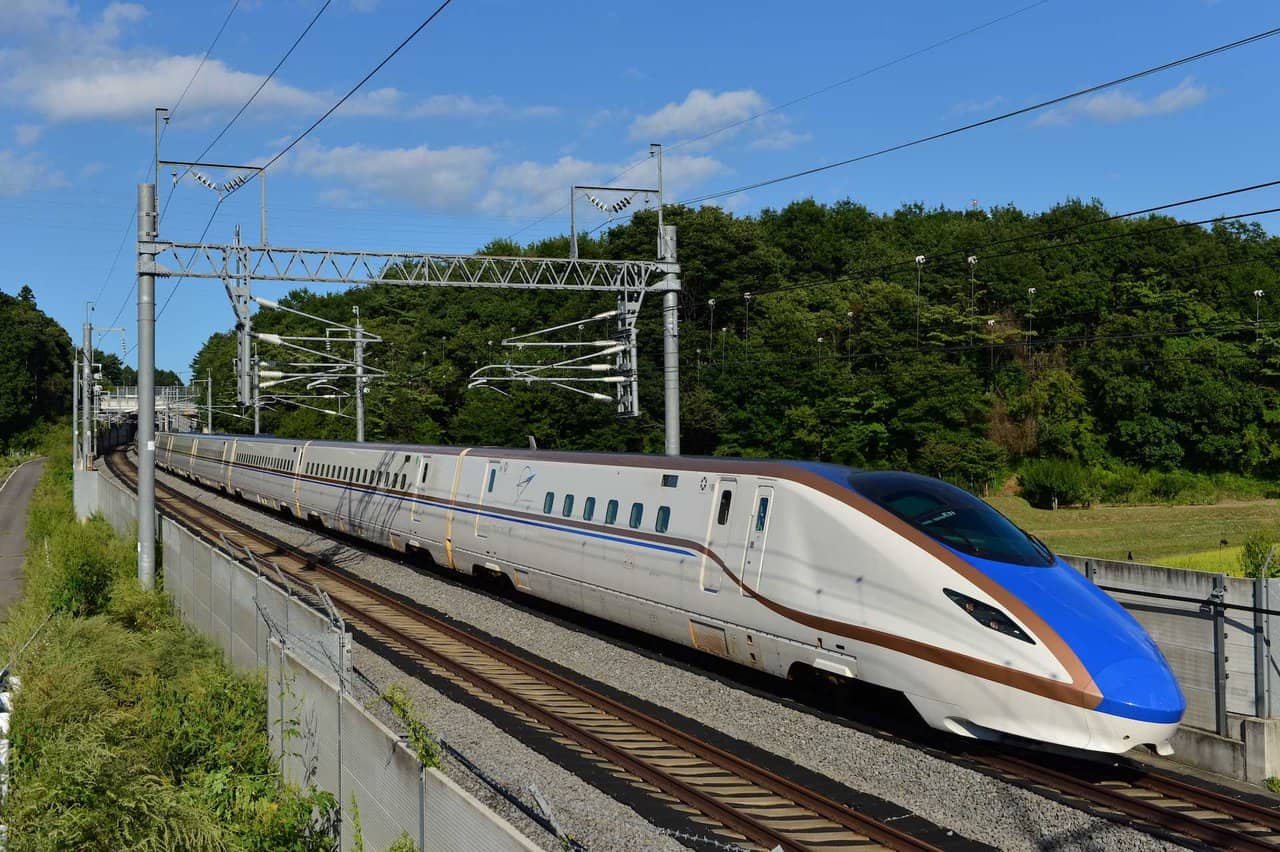The image of the Shinkansen, Japan’s high-speed train, is iconic for travelers worldwide. Its sleek facade is instantly recognizable, and even locals may stop and stare to watch it glide gracefully by, sometimes at speeds approaching 300 kph. For many visitors, the ride itself is an attraction, an item on the Japan bucket list that can be checked off by a convenient ride between Tokyo and Kyoto or Osaka.
But even in Japan, the expansion of Shinkansen service to additional areas is something people get excited about. Shinkansen access is the magic key that opens up parts of the country to both foreign and domestic visitors, even if those areas were accessible by other means before. So, it is no surprise that Japan is fired up about the latest extension to the Shinkansen network coming in March 2024.
A Brief History of the Shinkansen Bullet Train
Japan Rail’s Shinkansen, internationally known as the “bullet train,” is one of the world’s most comfortable and convenient ways to travel. The original Shinkansen line, the Tokaido Shinkansen, connected Tokyo to Shin-Osaka via Kyoto in 1964, just in time for the first Japan-hosted Olympic games. Since then, the network of Shinkansen lines has continued to expand, connecting more and more of Japan’s once difficult-to-reach cities on a seamless high-speed rail system.
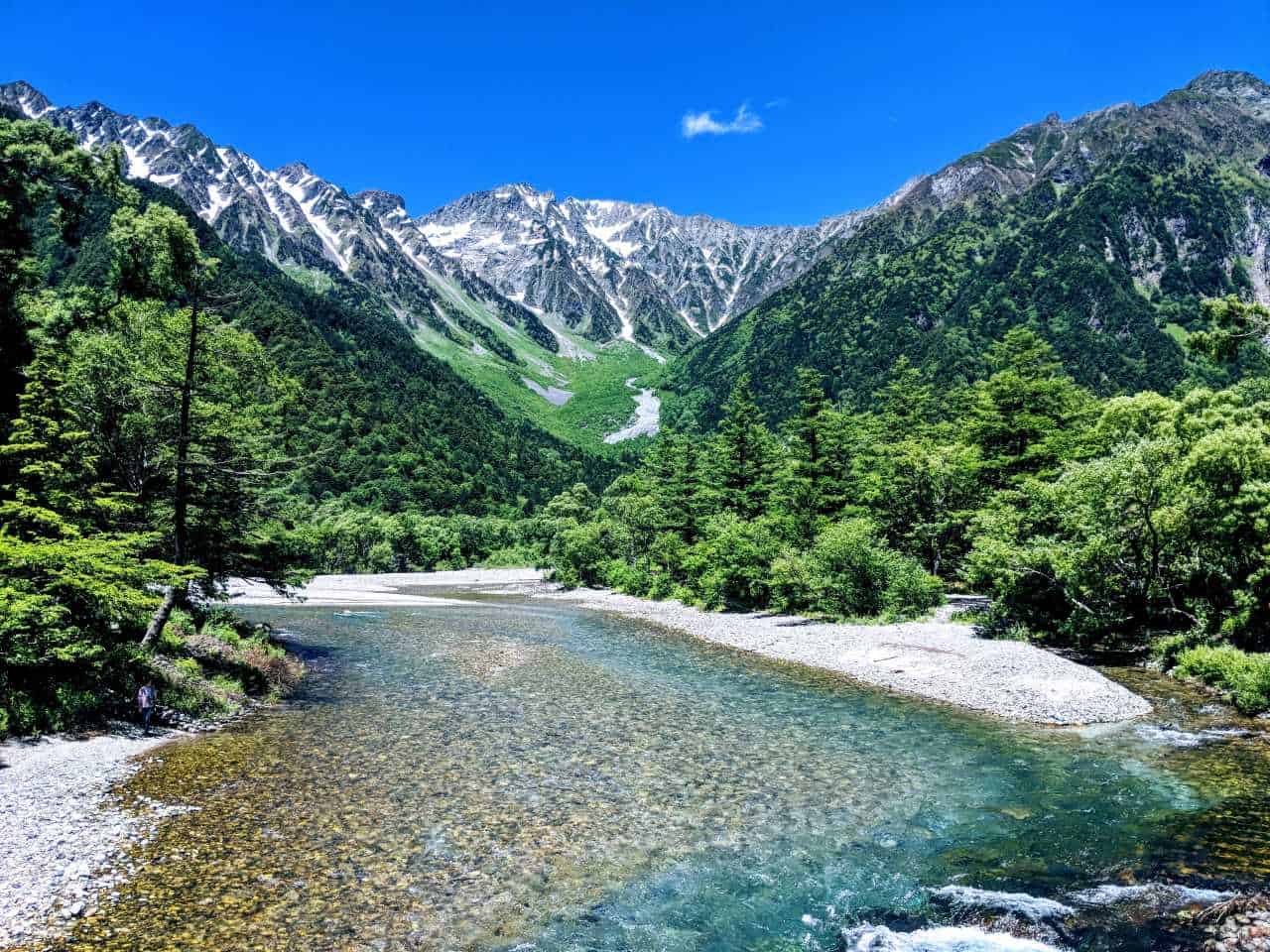
The Hokuriku Shinkansen was also born from the Olympics, albeit 33 years later in 1997, just ahead of the 1998 Nagano Winter Games, connecting Tokyo with Nagano City. This line gave tourists easy access to the beauty of the Japan Alps in Nagano Prefecture, dozens of powder snow resorts, and helped make a mountain park full of onsen-loving monkeys world famous.
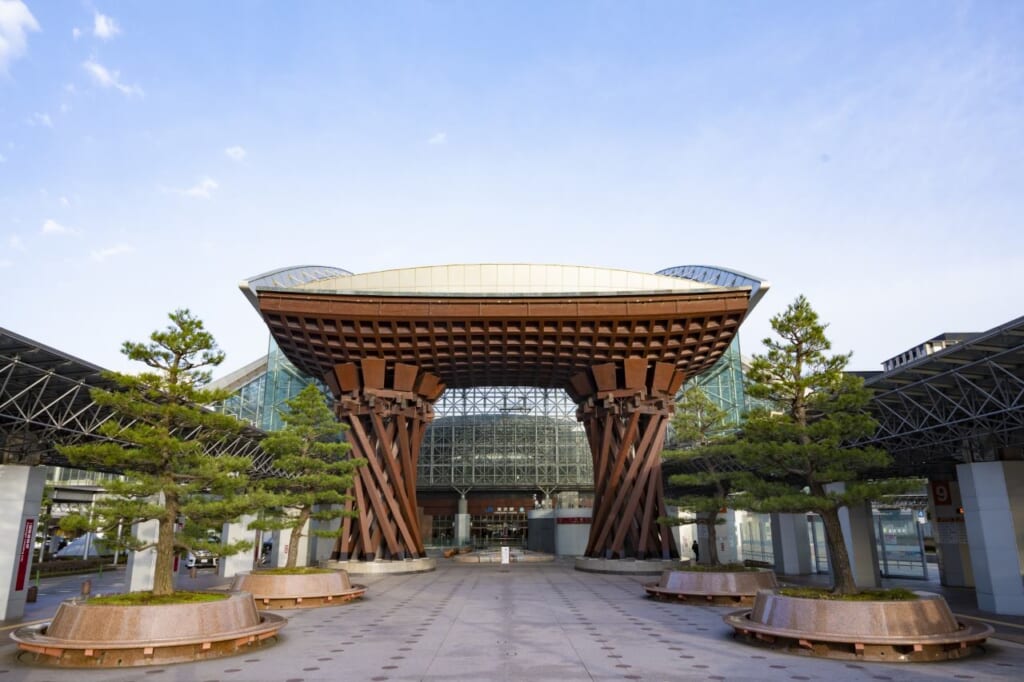
The line was extended in 2015 to its current endpoint, Kanazawa City. This extension helped spotlight Ishikawa and Toyama prefectures, once part of the Edo Period’s powerful Kaga Domain, centers of traditional arts and crafts. With his enormous wealth and power, the Maeda clan lords of Kaga funneled their money into becoming patrons of the arts to demonstrate they were no threat to the Tokugawa Shogunate. This brought some of Japan’s finest artisans to the region, who worked on decor for elaborate temples, shrines and high-ranking samurai residences. Today’s visitors can enjoy browsing the workshops of artisans in metalwork, kimono dyeing, and ceramic making, in addition to dozens of other traditional crafts carefully nurtured in this area over the past 400 years.
In March 2024, the Hokuriku line is poised for another extension, this time to Tsuruga City in Fukui Prefecture. The new section opens beautiful onsen towns, pristine natural landscapes, and dozens of important historical and cultural sites to Shinkansen riders, and is set to change the way visitors to Japan view the Hokuriku region yet again.
New Hokuriku Extension, New Hokuriku Destinations
Like the previous Hokuriku Line construction and extensions, the latest extension is set to open a plethora of new travel destinations to Shinkansen riders. Kagaonsen Station is near several of Ishikawa Prefecture’s most famous onsen towns, including Yamanaka Onsen and Yamashiro Onsen, where locals have gone for relaxation and healing for centuries. Yamanaka Onsen, in particular, runs along the verdant Kakusenkei Gorge, a fairy-tale forest of moss carpet and towering cedar.
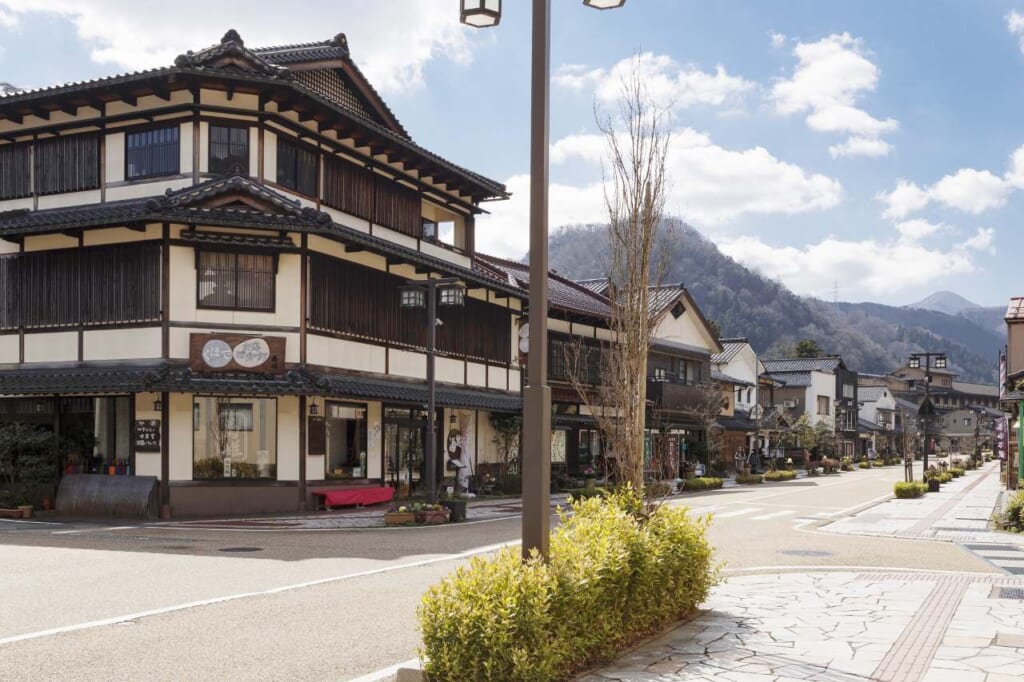
The extension continues through Fukui City, the capital of Fukui Prefecture.The city and its surroundings have a long and rich history preserved in multiple must-see attractions: the world-class Fukui Dinosaur Museum, the sprawling Eiheiji Zen Buddhist Temple nestled in the mountains, and Maruoka Castle, the oldest of the 12 original castles remaining in Japan.
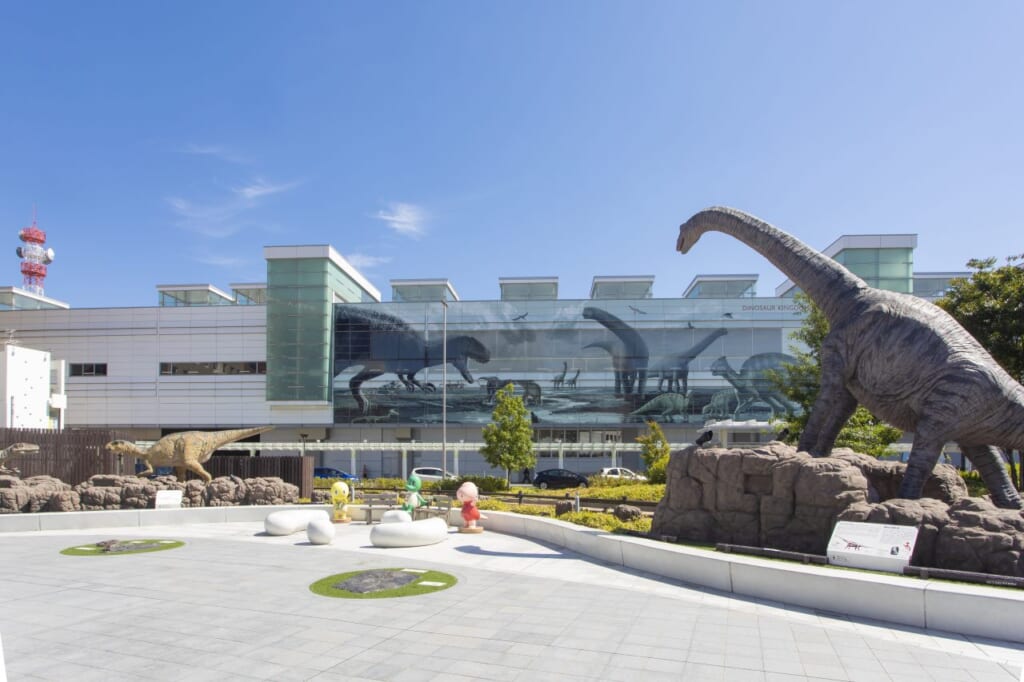
Next up: Echizen, a stronghold of Japan’s traditional crafts for centuries. With plentiful natural resources and proximity to the capital of Kyoto in ancient times, Echizen developed master artisans excelling in the arts of woodworking, metalworking, washi papermaking, and many other crafts. The papermaking art in Echizen is particularly significant, said to be the origin of washi papermaking in Japan from 1,500 years ago. Visitors should certainly make a stop at the Okamoto-Otaki Shrine, dedicated to the woman said to have brought the art of washi to the area; this shrine in the forest has a unique architectural design and is easily one of the most photogenic shrines in the country. Many businesses established centuries ago still thrive in Echizen, which is also home to dozens of important temples and shrines.
Finally, destination Tsuruga. Tsuruga grew as an important port town along the Sea of Japan. Although not as influential as it was in its glory days, Tsuruga preserves its important history as a center of sea trade in various buildings, museums, and places of interest. Tsuruga also boasts a pristine coastline with pine groves, beaches, and panoramic scenic views.
Creating A “New Golden Route”
Extending the Hokuriku Shinkansen line to Tsuruga represents another leap forward in creating a “New Golden Route” in Japan, linking Tokyo with Kyoto and Osaka. While the current “Golden Route” via Yokohama, Shizuoka, and Nagoya is one of the world’s most traveled high-speed rail routes, the New Golden Route creates another option for tourists who desire to experience parts of Japan that were less convenient to access in the past.
The New Golden Route makes it possible to add destinations like Nagano, Toyama, Kanazawa and Fukui to your Japan travel itinerary while still allowing you to move between Tokyo and Kyoto/Osaka with ease. Along the route, enjoy scenic views of autumn foliage around Karuizawa, the snowy peaks of the Japanese Alps in Nagano Prefecture, and the well-preserved historical temples and shrines from Kanazawa to Tsuruga.
Eventually, the Hokuriku Shinkansen will be extended all the way to Shin-Osaka Station, but until that time, the JR Thunderbird and Shirasagi Express trains handle travel along the missing section with speed and efficiency.
Make the Most of the New Golden Route with the Hokuriku Arch Pass
Access to these Hokuriku destinations is cheaper and more convenient using the Hokuriku Arch Pass, providing unlimited travel for short-term overseas visitors for 7 consecutive days on most Shinkansen, limited express, express and ordinary trains through the Hokuriku area connecting the Tokyo metropolitan area, Kyoto, and Osaka. The pass also includes services to and from Narita, Haneda, and Kansai International Airports.
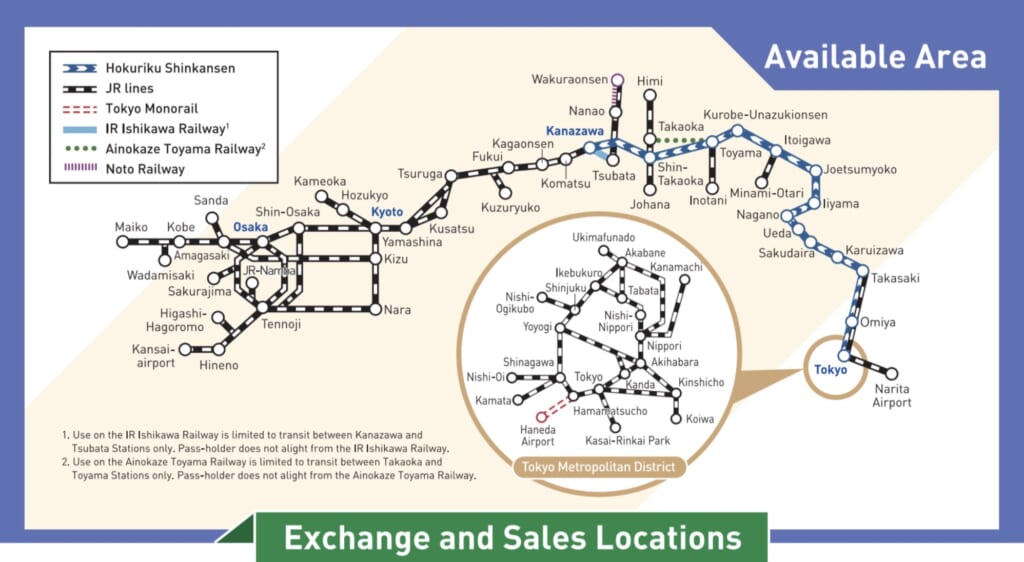
Additionally, the pass offers discounts for many other attractions, transportation, and shopping throughout the regions covered by the pass. Details are available on the website.
Purchase the Hokuriku Arch Pass online from outside of Japan for just 24,500 yen or upon arrival in Japan for 25,500 yen. (*as of February 2024) Remember, only short-term overseas travelers are eligible to purchase this coveted pass, so check the details carefully online.
JR East : Hokuriku Arch Pass | Fares & Passes | JR-EAST (jreast.co.jp)
JR West : Hokuriku Arch Pass (westjr.co.jp)
Explore Beyond the Hokuriku Shinkansen Line on JR Scenic Trains
You don’t need to be tied to locations directly along the Hokuriku Shinkansen Line during your visit.Using the Hokuriku Arch Pass, you can also ride a special train in the Hokuriku region: the scenic Hanayome Noren train.
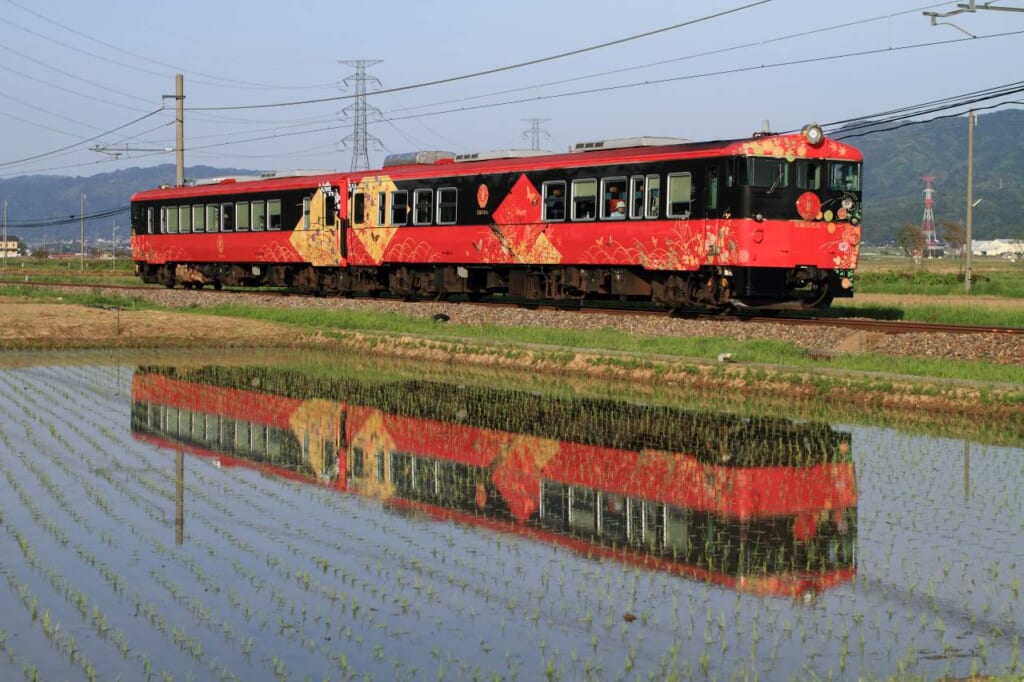
For a traditional arts-inspired trip through the Hokuriku countryside, take the Nanao Line Tourist Train “Hanayome Noren” between Kanazawa and Wakuraonsen on Ishikawa Prefecture’s Noto Peninsula. The unique design of the train is inspired by Hokuriku’s traditional arts, including Wajima-nuri lacquerware, Kaga Yuzen dyeing, and Kanazawa Kinpaku gold leaf. One of the two cars of the train features semi-private compartments decorated in traditional patterns created in this region and the other has exhibition and event spaces where riders can enjoy traditional art performances or perhaps a tasting of local food and beverages. Specially designed ekiben bento boxes and confectioneries are available exclusively for passengers of the Hanayome Noren (however, they must be ordered in advance).
*Hanayome Noren train is currently suspended.(As of January 2024)
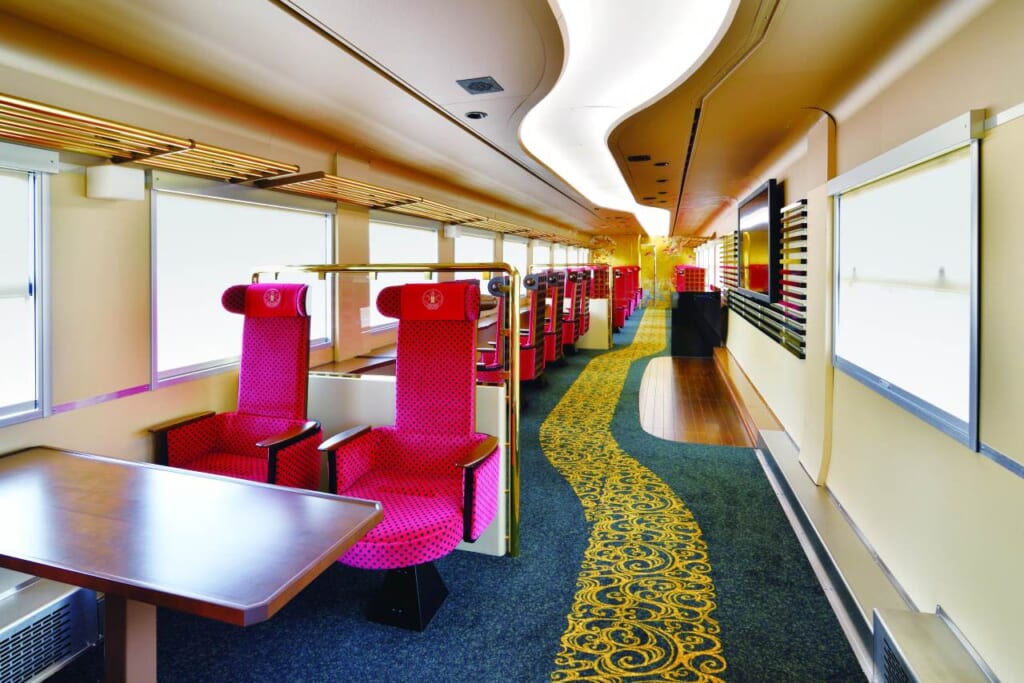
Note that the Hokuriku Arch Pass covers the fares for these special trains, but you will need to reserve a seat to ride it. The friendly JR staff at ticket windows of many stations will be happy to help you understand what tickets you need and complete the transaction for you.
Be sure to check out our other articles about adventurous travel destinations with the Hokuriku Arch Pass:
Adventure Travel Destinations Await Using the Discount Hokuriku Arch Pass
The New Golden Route: Getting Outdoorsy with the Hokuriku Arch Pass
The extension of the Hokuriku Shinkansen into Tsuruga in March 2024 is just one more reason to choose “the rail less traveled by” when you make the journey between Tokyo, Kyoto, and Osaka. Coupled with the Hokuriku Arch Pass, it could make all the difference when it comes to opening up a world of new experiences for you to savor in Japan.
Sponsored by Tokyo, Gunma Prefecture, Niigata Prefecture, Nagano Prefecture, Toyama Prefecture, Gifu Prefecture, Ishikawa Prefecture, Fukui Prefecture, Shiga Prefecture, Kyoto, JR EAST, JR WEST


